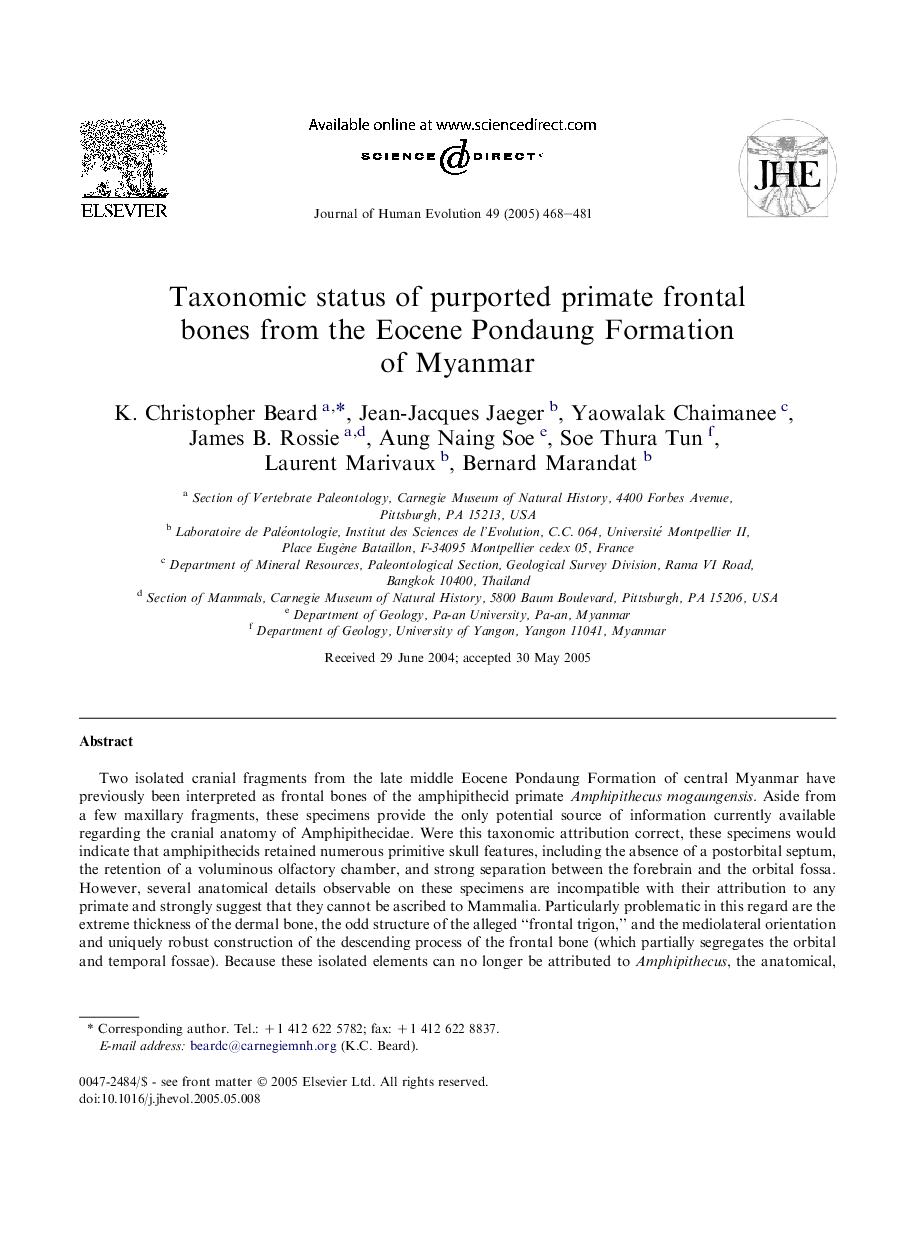| Article ID | Journal | Published Year | Pages | File Type |
|---|---|---|---|---|
| 9485904 | Journal of Human Evolution | 2005 | 14 Pages |
Abstract
Two isolated cranial fragments from the late middle Eocene Pondaung Formation of central Myanmar have previously been interpreted as frontal bones of the amphipithecid primate Amphipithecus mogaungensis. Aside from a few maxillary fragments, these specimens provide the only potential source of information currently available regarding the cranial anatomy of Amphipithecidae. Were this taxonomic attribution correct, these specimens would indicate that amphipithecids retained numerous primitive skull features, including the absence of a postorbital septum, the retention of a voluminous olfactory chamber, and strong separation between the forebrain and the orbital fossa. However, several anatomical details observable on these specimens are incompatible with their attribution to any primate and strongly suggest that they cannot be ascribed to Mammalia. Particularly problematic in this regard are the extreme thickness of the dermal bone, the odd structure of the alleged “frontal trigon,” and the mediolateral orientation and uniquely robust construction of the descending process of the frontal bone (which partially segregates the orbital and temporal fossae). Because these isolated elements can no longer be attributed to Amphipithecus, the anatomical, phylogenetic, and behavioral inferences regarding amphipithecid paleobiology that have been drawn from these specimens can no longer be sustained.
Related Topics
Life Sciences
Agricultural and Biological Sciences
Ecology, Evolution, Behavior and Systematics
Authors
K. Christopher Beard, Jean-Jacques Jaeger, Yaowalak Chaimanee, James B. Rossie, Aung Naing Soe, Soe Thura Tun, Laurent Marivaux, Bernard Marandat,
